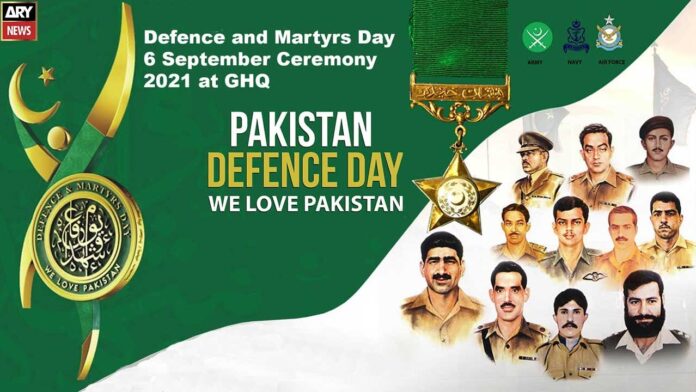Every year, the day comes and goes by. This year the Pakistani nation should celebrate Defence of Pakistan Day (Sept 6) as a day of intro spection.. India is arming itself to the hilt. Despite economic setbacks due to Covid 19, Indian economy has stayed put. They do not have to go country to country with a begging bowl.
Vikrant aircraft carrier: With the $3 billion Vikrant, India will join only a small number of nations with more than one aircraft carrier or helicopter carrier in service. It has become the third country, after the UK and China, to have commissioned a domestically built aircraft carrier in the past three years.
John Bradford, senior fellow at the S. Rajaratnam School of International Studies in Singapore, said India’s commitment to the ship reflected its “long-term vision to maintaining a world-class naval force.”
When its air wing becomes fully operational over the next few years, it will carry up to 30 aircraft, including MiG-29K fighter jets to be launched from its ski-ramp style deck, and helicopters as well as defensive systems including surface-to-air missiles.
India’s message to its neighbours is “India has the power, it has the aircraft carriers and therefore the air power to dominate the distant reaches of the Indian Ocean”.The Vikrant has a range of 8,600 miles (13,890 kilometers).
Besides, India is building Scorpion submarines (costing Rs 20,000 crore) with 11,000 km range. These subs can stay at sea for 50 days and can carry missiles, mines and torpedoes to attack surface vessels.
India has eight P-3C Orion long-range maritime patrol aircraft, costing Rs 13000 crore. They can fly 4,000 km, stay airborne for 12 hours and attack surface targets with missiles or patrol coastline. Add to it procurement of Rafael jets from France.
Pakistan’s debt burden: Will every new baby be born in Pakistan indebted forever? We consume debts as if they were freebies. We made no effort to get our “odious debts” written off.
Pakistan’s debt burden has a political tinge. The USA rewarded Pakistan by showering grants on Pakistan for joining anti-Soviet-Union alliances (South-East Asian Treaty Organisation and Central Treaty Organisation).
In economics there are burden-of-debt models that could help decide how productively the debt should be so used that both principal and debt-service could be repaid. Unfortunately we spent the debt as if it were a non-repayable windfall bonanza.
What a pity!
Whenever the International Monetary Fund’s delegation visits, Pakistan’s representatives keep mum about the politically-motivated odious nature of our debt burden.
Will every new baby be born in Pakistan indebted forever? We consume debts as if they were freebies. We made no effort to get our “odious debts” written off. Pakistan’s debt burden has a political tinge.
Political parties without economic agenda: Parties win elections by pandering to base sentiments of the people. A key element of election slogans is always ‘change’. But, the nitty-gritty of the ‘change’ remains a strictly guarded mumbo jumbo.
The taxation proposals do little to squeeze the haves. Nothing is done to reduce inequitable distribution of wealth and economic power. No heed is paid to the structure of our society. How did the filthy rich, the feudal lords and the industrial robber barons come into being? If accumulated wealth in a few hands is rooted in wrongdoing, a considerable chunk of it should be mopped up. Vested interests resist the change.
The British created a class of chieftains to suit their need for loyalists, war fundraisers and recruiters in the post-’mutiny’ period and during the Second World War. A royal gubernatorial gazetteer states: “I have for many years felt convinced that the time had arrived for the Government to try to introduce some distinction for those who can show hereditary services before the Humble Company’s rule in India ceased. I have often said that I should be proud to wear a Copper Order, bearing merely the words ‘Teesri pusht Sirkar Company ka Naukar’ (Third generation Company’s servant).”
A feudal aristocracy was created whose generations ruled post-independence governments. Some pirs and mashaikh (religious leaders) even quoted verses from the Holy Quran to justify allegiance to the Englishman (amir), after loyalty to Allah and the Messenger (PBUH). They pointed out that the Quran ordained that ehsan (favour) be returned with favour. The ehsan were British favours like titles (khan bahadur, nabob, etc), honorary medals, khilat with attached money rewards, life pensions, office of honorary magistrate, assistant commissioner, courtier, etc. A Tiwana military officer even testified in favour of O’Dwyer when the latter was under trial. Ayub Khan added the chapter of 22 families to the aristocracy, a legacy of the English Raj.
About 460 scions of the pre-partition chiefs along with industrial barons created in the Ayub era are returned again and again to the Assemblies. They do not allow agricultural incomes, industrial profits or real estate to be adequately taxed.
Health-care and education: Pakistan’s healthcare system is in shambles. There is only one hospital for federal civil servants that are Federal Government “Services” Hospital. Instead of establishing new hospitals. The successive civil governments allowed non-employee civilian residents of Rawalpindi and Islamabad and those who happen to have CNICs of the said cities to get free treatment at the said hospital. Because of overcrowding, the hospital has become good for nothing for civil servants.
Elderly civil centres have to queue up with unauthorised non-employee civilians. There are no separate queues for “civil servants”. Doctors give preferential treatment to non-employees who pay them hefty fees at their private clinics. Civil servants are given long dates for operation theatre procedures. I, for one, am a septuagenarian retiree with cumulative 40 years’ service. I have been directed to wait for next year to get operated by a urologist. The FGSH is the only hospital in the world where beds have been allocated to doctors whose names are printed on walls. The lavatories stink. Essential medicines are unavailable.
Even senior civil servants with a lifetime of service have to stink in general wards. The officers’ wards are allotted to non-civil-servants who have a way with the muckraker doctors. There is need to transfer non-employee patients to nearby PIMS hospital. Or non-employees should be treated as private patients. A thorough probe into hospital funds, medical procurements and unethical practices by doctors is warranted.
Building Kalabagh and other dams: The first priority of most countries, including the USA, Russia, Brazil, and China, was to build hydel projects, a clean source of energy.. China’s big push into industrial progress was due to a chain of hydel projects like the Three Gorges, Gezhouba, Xiluodu, Xiangjiaba, Longtan, Hengshui, Nuozhadu, Jinping-I and II, Yalong, Laxiwa, Xiaowan, Goupitan, Guanyinyan, and Ahai.
After the commissioning of the Tarbela Dam in 1976, the dam could have been built in six years by 1982. The cost per unit of 12 billion units the hydel electricity was Rs.1.5 as compared to Rs. 16.5 per unit from thermal sources. We are losing Rs. 180 billion per year due to ten times costlier production (12billion xRs.15 billion). Add to it loss of US$ 6.12 billion per annum due to the superfluous flow of 30 Million Acre Feet of water from Kotri Barrage into the Arabian Sea (one MAF valued at US$1-1.5 billion).
Concluding remark: We need to do some soul searching. Is it fair to devolve dam building to provinces? To make Pakistan strong, its citizens should contribute their moitié.























